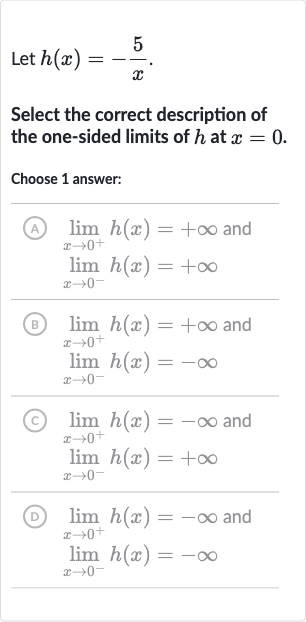Full solution
Q. Let .Select the correct description of the one-sided limits of at .Choose answer:(A) and (B) and (C) and (D) and
- Approaching from the positive side: Consider the function and what happens as approaches from the positive side (right-hand limit). As gets closer to from the positive side, the value of becomes very large, and since we have a negative sign in front of the , will approach negative infinity.
- Calculating the right-hand limit: Calculate the right-hand limit of as approaches .
- Approaching from the negative side: Consider the function and what happens as approaches from the negative side (left-hand limit). As gets closer to from the negative side, the value of becomes very large in the negative direction, and since we have a negative sign in front of the , will approach positive infinity.
- Calculating the left-hand limit: Calculate the left-hand limit of as approaches .
More problems from Domain and range of relations
QuestionGet tutor help
QuestionGet tutor help

